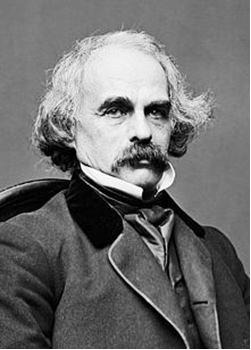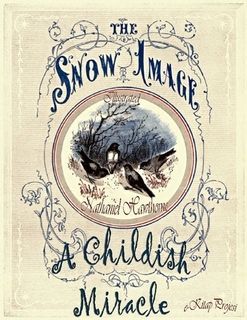More Search Results...

He was born in 1804 in Salem, Massachusetts to Nathaniel Hathorne and the former Elizabeth Clarke Manning. His ancestors include John Hathorne, the only judge involved in the Salem witch trials who never repented of his actions.
Much of Hawthorne’s writing centers on New England, many works featuring moral allegories with a Puritan inspiration. His fiction works are considered part of the Romantic movement and, more specifically, Dark romanticism. His themes often center on the inherent evil and sin of humanity, and his works often have moral messages and deep psychological complexity. His published works include novels, short stories, and a biography of his friend Franklin Pierce.
The Snow-Image {A Childish Miracle}
Some of Nathaniel Hawthorne's early stories for children which appeared initially in juvenile magazines ended up in collections of stories for adults. Such was the case with "Little Annie's Ramble," which appeared first in Youth's Keepsake and then, a few years later, in the first edition of Twice-Told Tales. Other stories took the reverse journey. They were written and published for adults, but were reprinted individually with illustrations for the juvenile market. One such story was "The Snow Image: A Childish Miracle," written for adults and published in 1851 in The Snow Image and Other Twice Told Tales. By the early 1860s, it had been published separately as an illustrated children's book and continued in print as such for many years, aimed at the 6 to 8 year old reader.
More info →The Scarlet Letter: [Illustrated Edition]
The Scarlet Letter is an 1850 romantic work of fiction in a historical setting, written by Nathaniel Hawthorne, and is considered to be his magnum opus. Set in 17th-century Puritan Boston, Massachusetts, during the years 1642 to 1649, it tells the story of Hester Prynne, who conceives a daughter through an affair and struggles to create a new life of repentance and dignity. Throughout the book, Hawthorne explores themes of legalism, sin, and guilt.
More info →

































![The Scarlet Letter: [Illustrated Edition]](https://www.cheapestboooks.com/wp-content/uploads/2015/08/The-Scarlet-Letter-eCoverr-249x400.jpg)